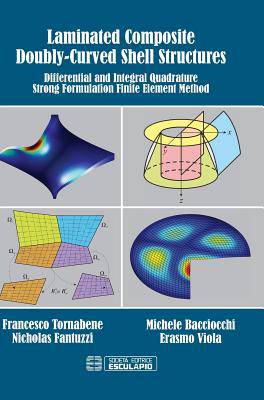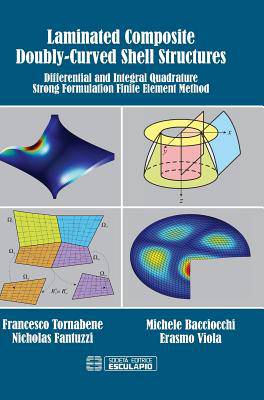
- Afhalen na 1 uur in een winkel met voorraad
- Gratis thuislevering in België vanaf € 30
- Ruim aanbod met 7 miljoen producten
- Afhalen na 1 uur in een winkel met voorraad
- Gratis thuislevering in België vanaf € 30
- Ruim aanbod met 7 miljoen producten
Zoeken
Laminated Composite Doubly-Curved Shell Structures. Differential and Integral Quadrature Strong Formulation Finite Element Method
Differential and Integral Quadrature Strong Formulation Finite Element Method
Francesco Tornabene, Michele Bacciocchi, Nicholas Fantuzzi
€ 217,45
+ 434 punten
Omschrijving
The title, "Laminated Composite Doubly-Curved Shell Structures. Differential and Integral Quadrature. Strong Form Finite Elements" illustrates the theme treated and the prospective followed during the composition of the present work. The aim of this manuscript is to analyze the static and dynamic behavior of thick and moderately thick composite shells through the application of the Differential Quadrature (DQ) method. The book is divided into two volumes wherein the principal higher order structural theories are illustrated in detail and the mechanical behavior of doubly-curved structures are presented by several static and dynamic numerical applications. In particular, the first volume is mainly theoretical, whereas the second one is mainly related to the numerical DQ technique and its applications in the structural field. The numerical results reported in the present volume are compared to the one available in the literature, but also to the ones obtained through several codes based on the Finite Element Method (FEM). Furthermore, an advanced version of the DQ method, termed Strong Formulation Finite Element Method (SFEM), is presented. The SFEM solves the differential equations inside each element in the strong form and implements the mapping technique typical of the FEM.
Specificaties
Betrokkenen
- Auteur(s):
- Uitgeverij:
Inhoud
- Aantal bladzijden:
- 874
- Taal:
- Engels
- Reeks:
Eigenschappen
- Productcode (EAN):
- 9788874889587
- Verschijningsdatum:
- 17/05/2016
- Uitvoering:
- Hardcover
- Formaat:
- Genaaid
- Afmetingen:
- 170 mm x 244 mm
- Gewicht:
- 1573 g

Alleen bij Standaard Boekhandel
+ 434 punten op je klantenkaart van Standaard Boekhandel
Beoordelingen
We publiceren alleen reviews die voldoen aan de voorwaarden voor reviews. Bekijk onze voorwaarden voor reviews.











